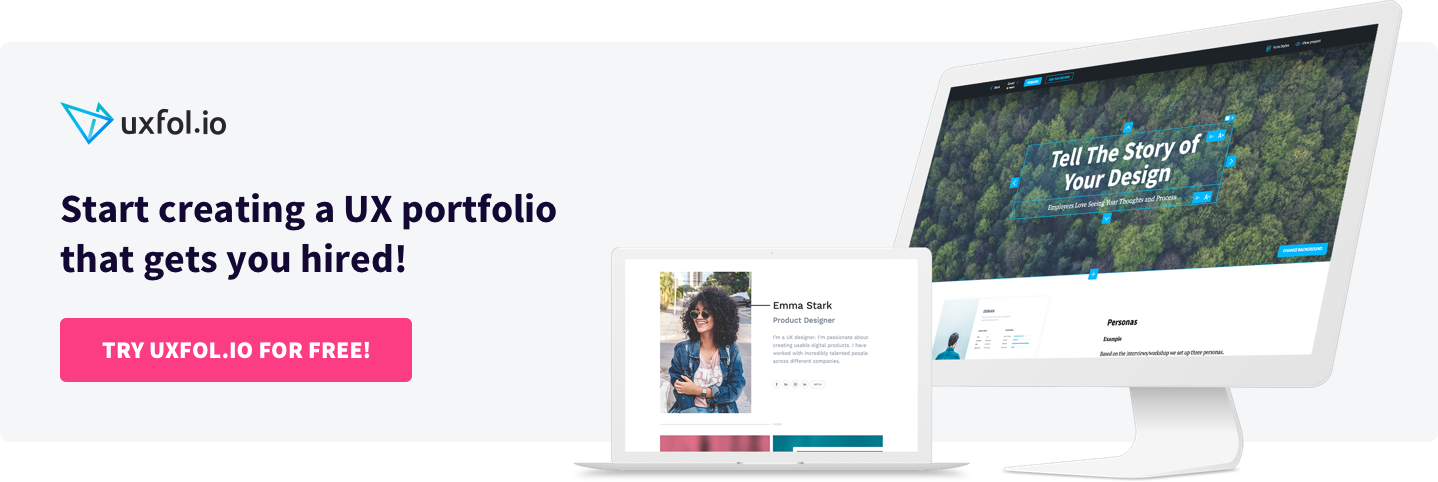The type of UX designer portfolio that tells design stories will get you invited to an interview. Tell the story of how you solved problems throughout the project and how you got to a solution by the end of the project. In order to do that, you must showcase your process, for what there is not a one-size-fits-all template.
Most of the time, different projects call for different UX methods, so present them one by one in every case study. Simply listing UX methods one after another, however, won’t cut it. Provide context and show you really know what you are doing, not just simply going along with the herd, using a popular UX method like everybody else does.
Whenever you present a UX method that helped you reach the solution, it should always answer these three questions:
Why did you choose it?
Just like you would give explanations to a client regarding some UX methods as to why they prove useful to the project, do the same in your very own product design portfolio. These explanations won’t just educate people who have never heard of these UX methods, but also show UX leads your ability to make conscious decisions when it comes to putting together your design process. As a UX designer, you will have to explain why you chose a certain method and what that method aimed to find out.
“I did interviews to get to know the users” in itself doesn’t say much. Instead, give specifics.
Look at this example. While describing the interviews, Marcela Díaz mentioned specific details she wanted to find out:
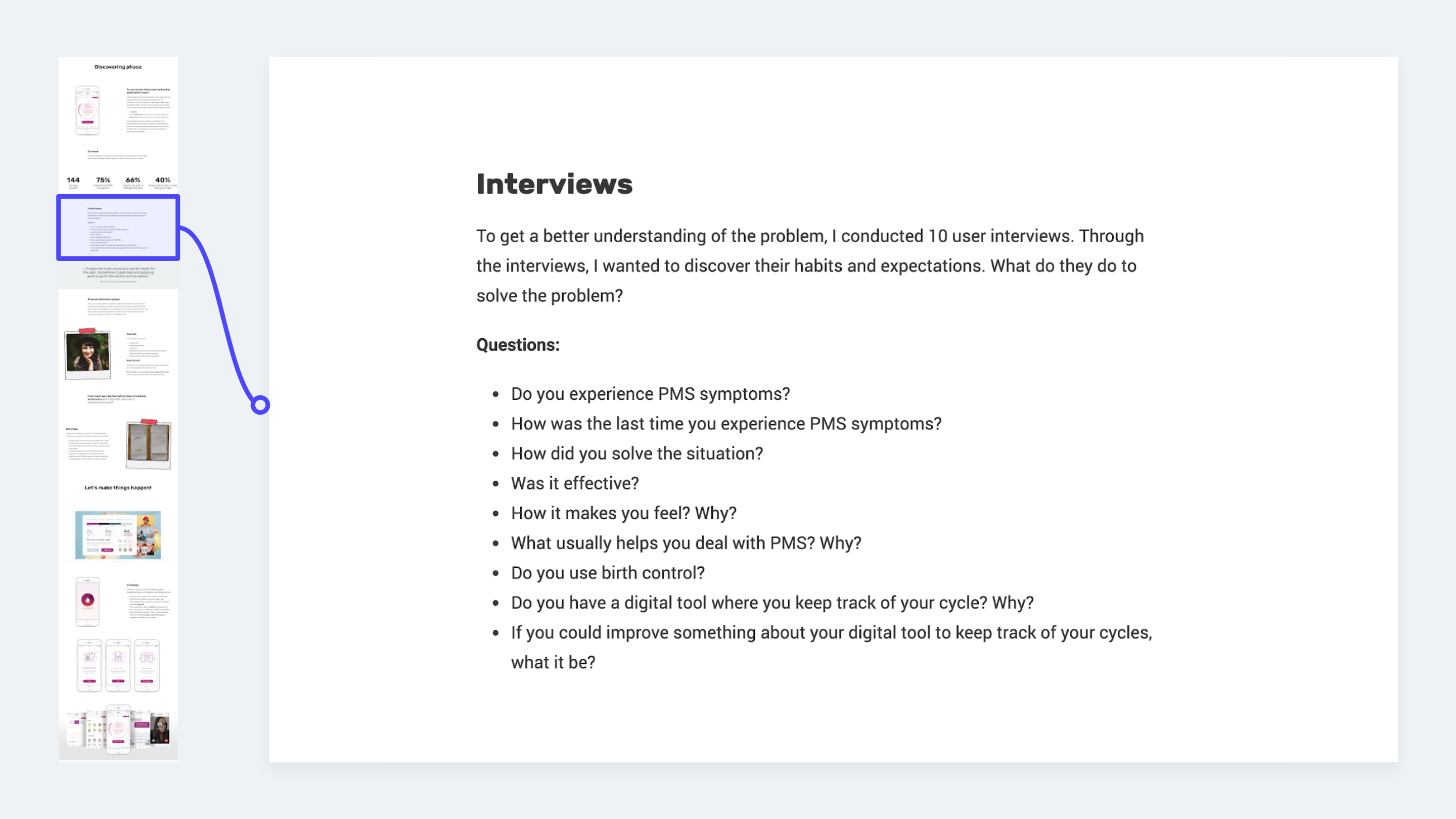
The reason for making interviews – LUNAR | Marcela Díaz
While this takes a bit longer, it provides so much more detail. You don’t have to come up with groundbreaking things, just details and the reasons so UX leads can see the thinking behind your work. Explaining the whys in detail shows you know exactly which to pick in order to generate the necessary results.
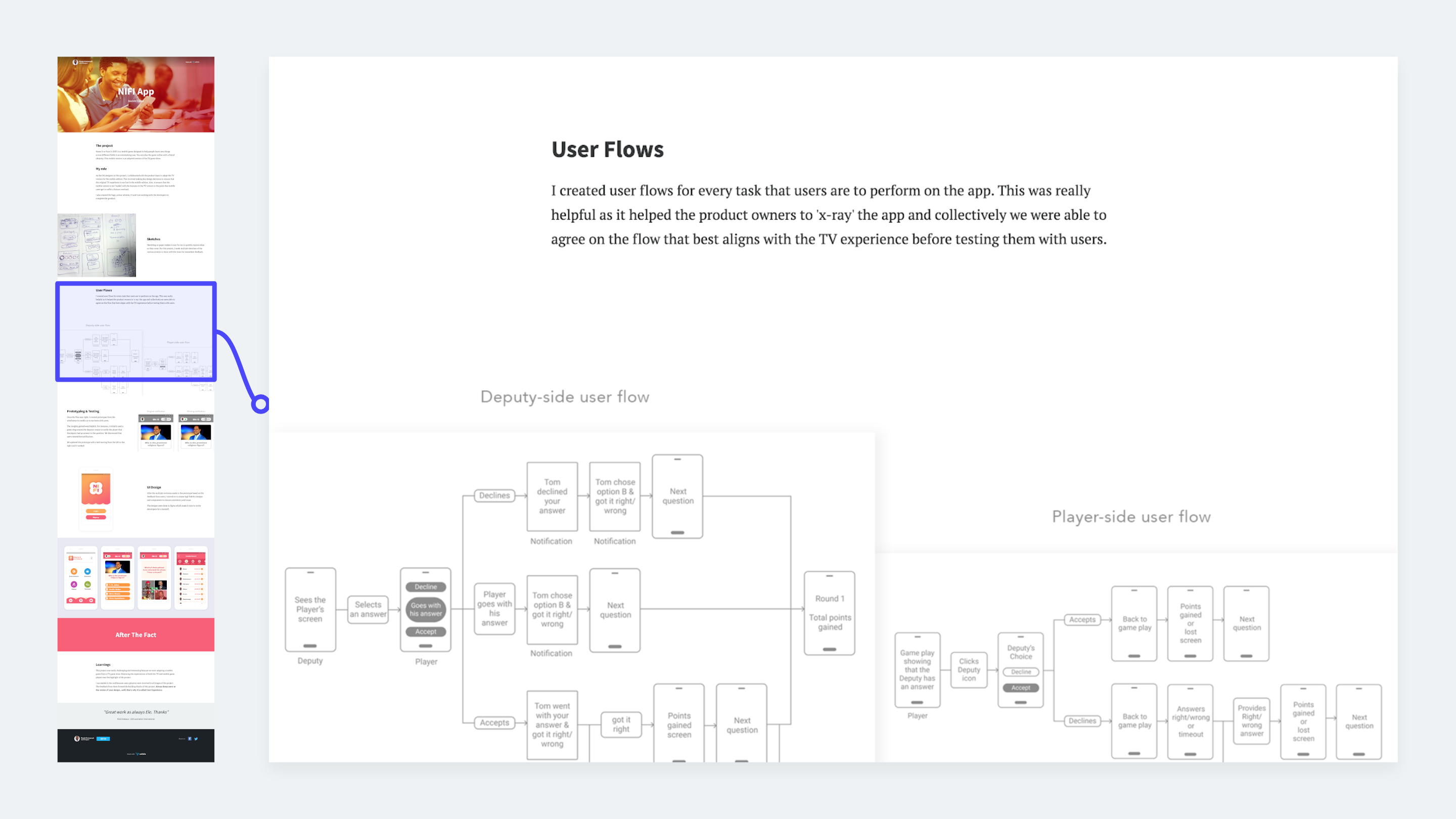
Why creating user flows proved beneficial – NIFI App | Eleojo Emmanuel
What did you do?
After explaining the why, write a couple of sentences about what exactly you did using that method. It’ll not only make the content of the UX case studies easier to understand, but it will also give you the chance to present some details. Since your design process will make up the majority of your case study, this part lets you give some background and elaborate on how your work went.
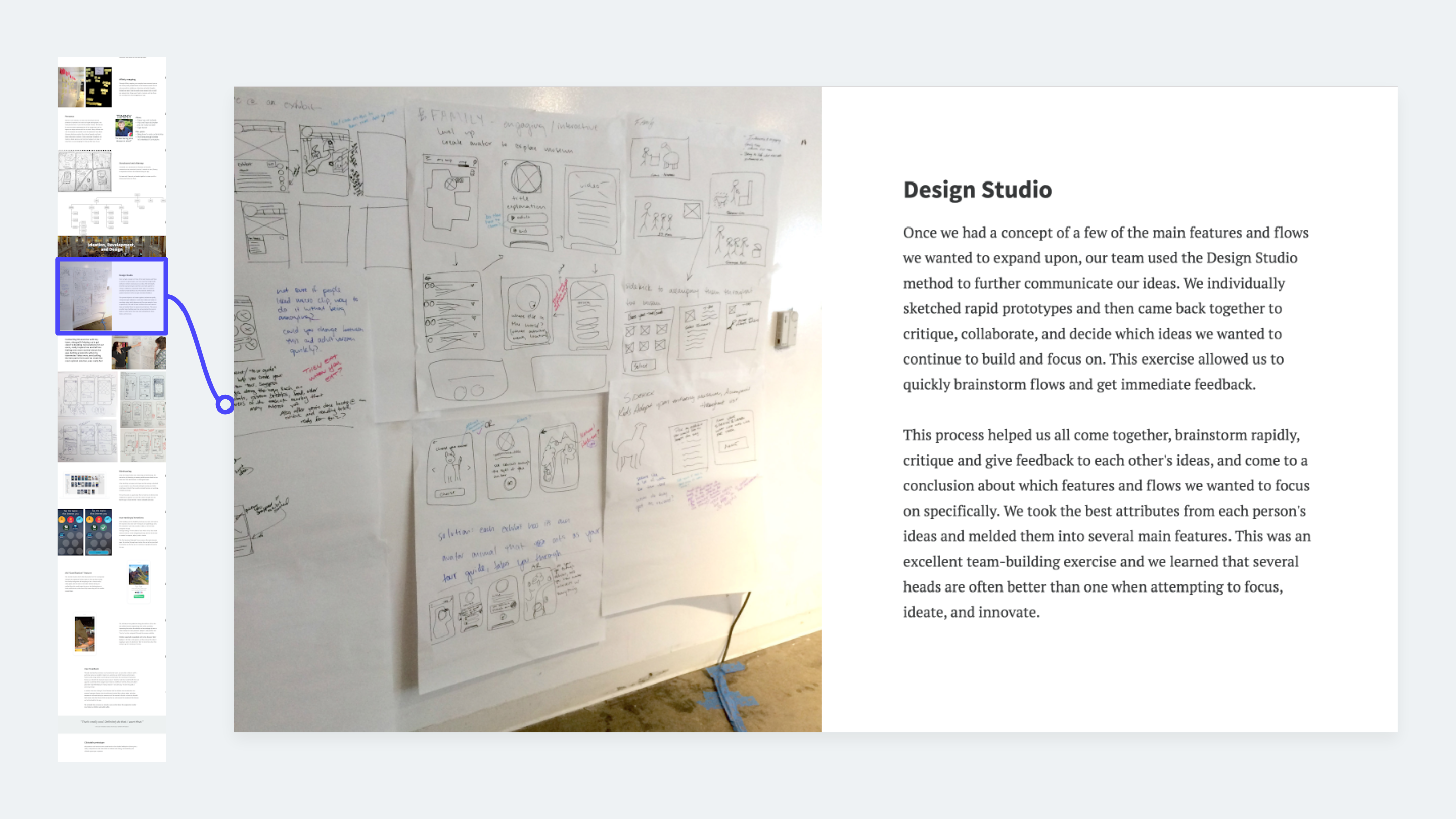
Details about the Design Studio method – Smithonian | Leighanna Fedorkova
These “what you did” paragraphs can explain how the sessions went, what sort of tasks the user had to go through while doing a user test, what set of questions you prepared for the interviews and so on. If you feel like it, also mention if the UX method failed and didn’t generate any useful feedback. In this case, however, don’t forget to also write about how you overcame this failure and the next step you took.
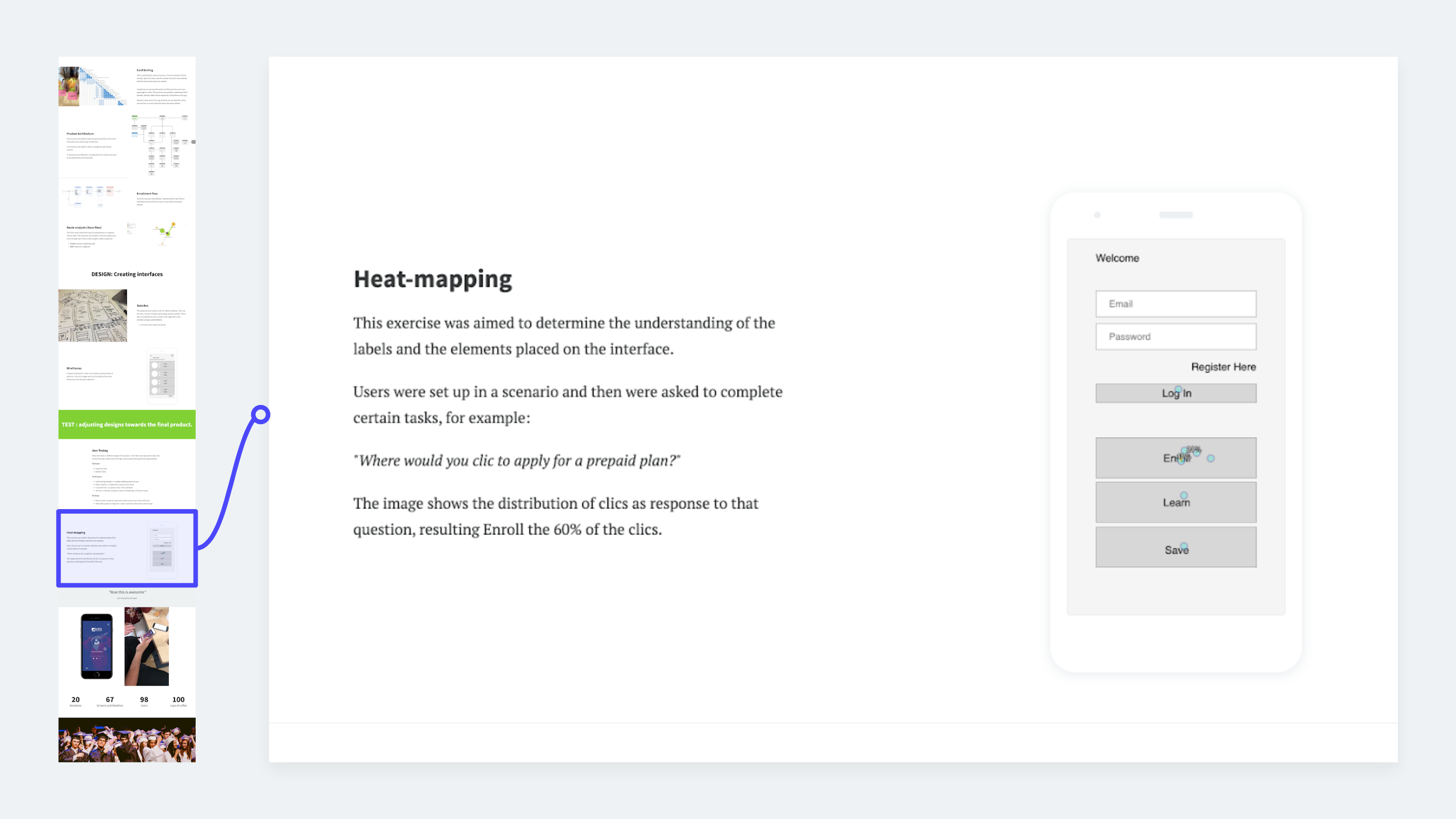
How the heat-mapping went – Florida Prepaid App | Eilin Cuenca
What outcome did it have?
So by this point, you have explained why you chose a certain UX method and also how the whole thing went, so only the outcome remains. Just like when writing essays, you should end in on a high note.
Outcomes provide user insights that helped you solve the main challenge of the project and thus come up with a final solution to be presented later on in your case study. These outcomes usually take one of two forms. A simple summary gives user insights that the used UX method yielded. Give percentages from a survey or present how the prototype performed on user tests, or what ideas a sketching workshop generated.
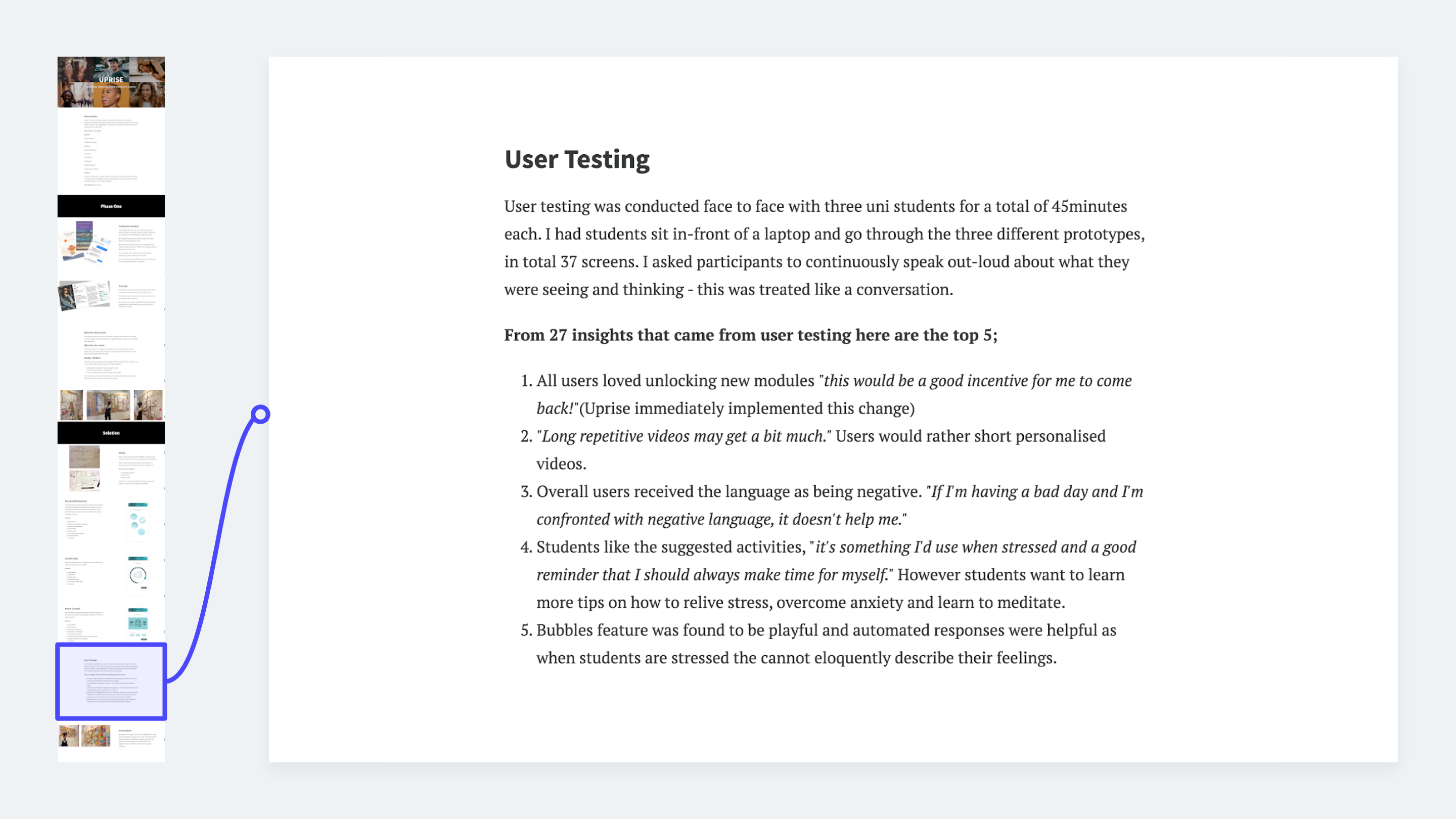
User testing insight highlights – Uprise | Elissa Santamaria
Or jump a bit ahead and only write the conclusion you reached with each UX method. It will show that you not only collected data but could also give suggestions based on those data.
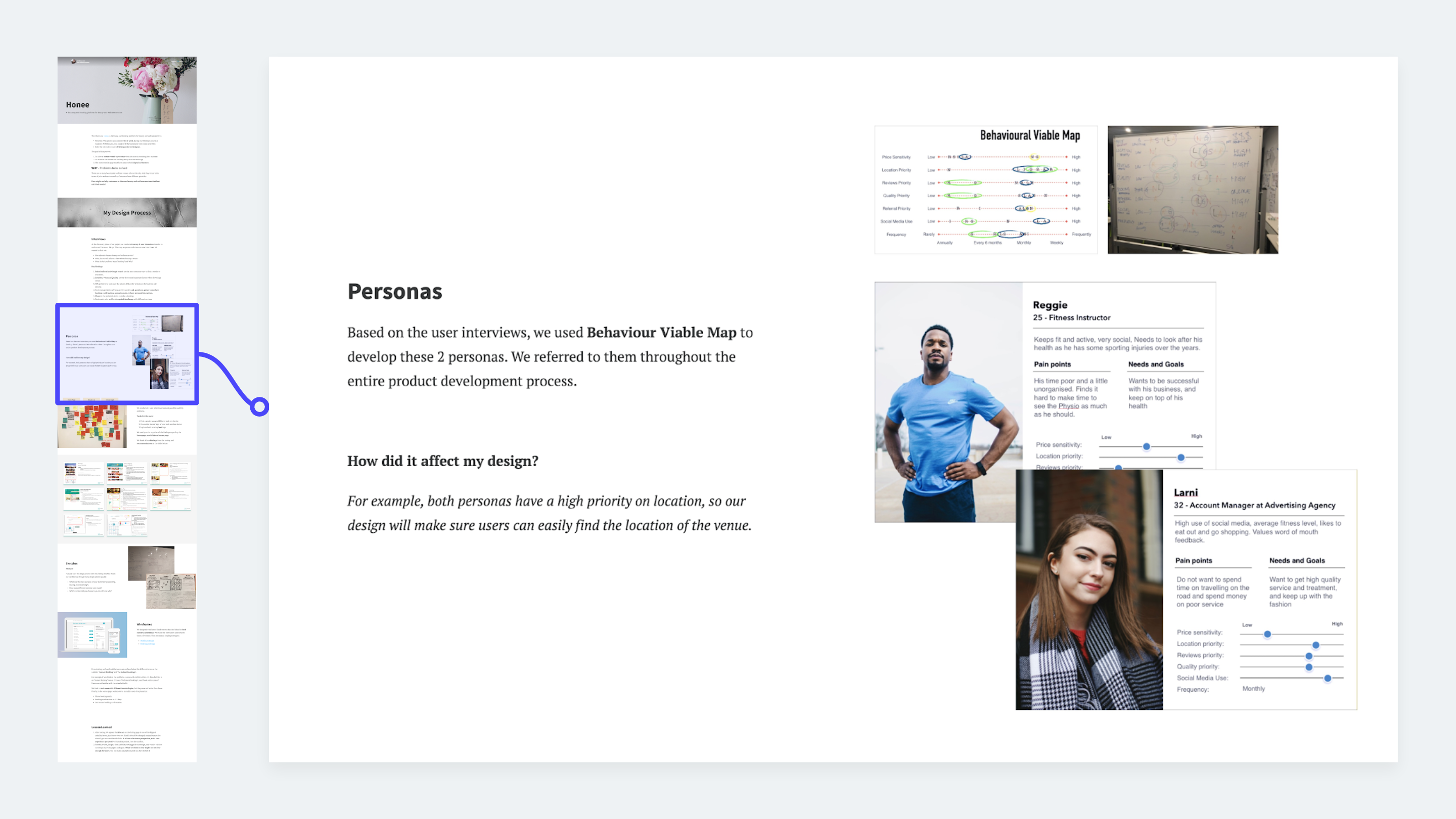
How personas affected the final designs – Honee | Lindsey Liao
And of course, if you feel like it, you can combine the summary of the results with the conclusions based on them to give a well-rounded summary of a specific part of your UX project. If you did user tests, present which parts worked and which didn’t and then explain what sort of changes the next rounds of tests required. Or if you investigated the analytics in your project and discovered something unusual, give specifics and your suggested solution.
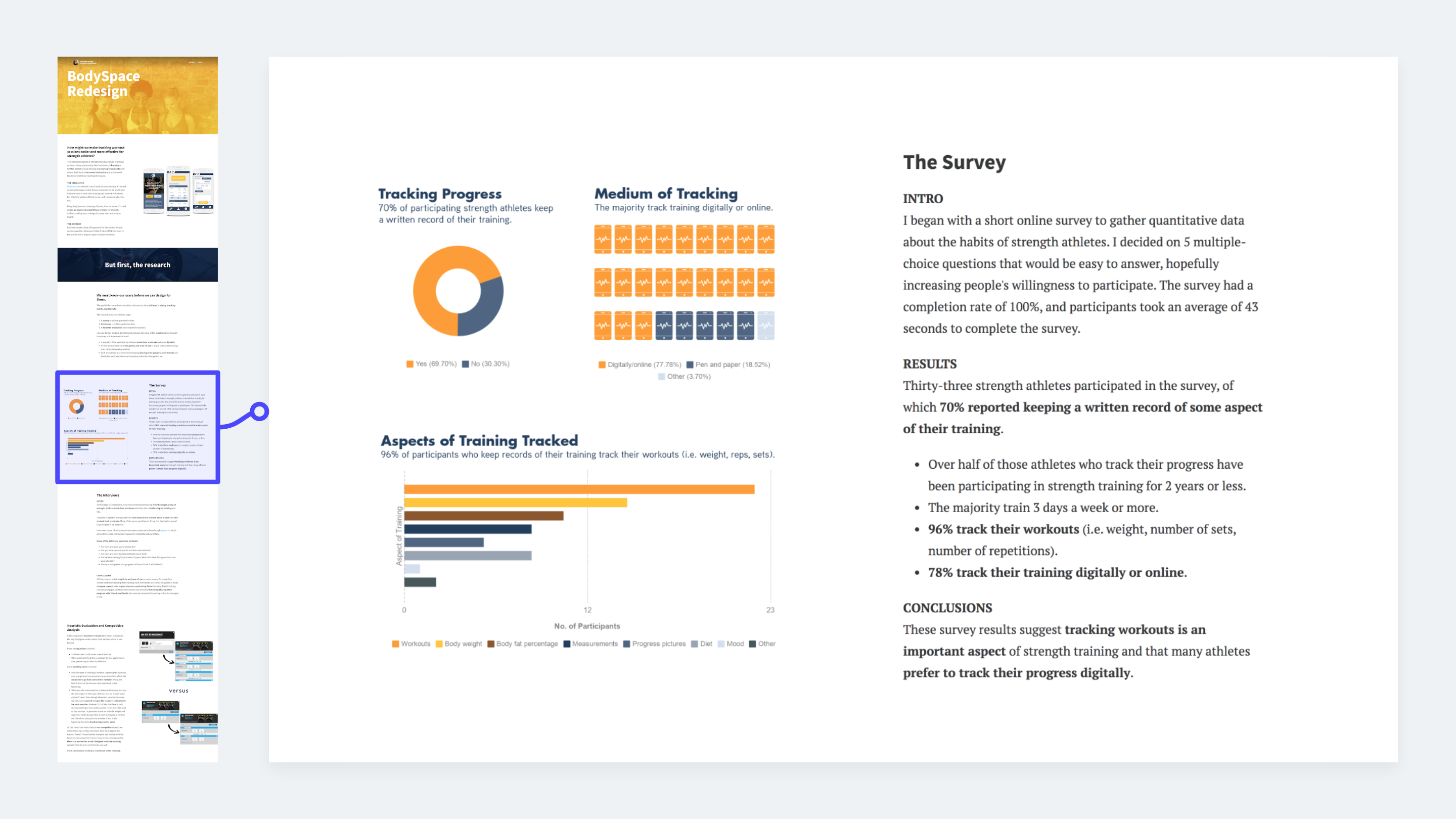
UX method results and conclusions combined – BodySpace Redesign | Jeannette Savage
When on the fence about presenting findings and explanations for fear of UX leads and recruiters judging you: They won’t. Since they didn’t take part in the project, they can’t assess whether you made the right decision. They can only see you making conscious design decisions throughout the design process and that you can also justify your choices.
If you need a little help presenting UX methods in your UX portfolio, give UXfolio a try!
It will save you tons of time, help you in the copywriting part and in building a UX portfolio UX leads and recruiters are looking for.
Start building your UX portfolio today.
